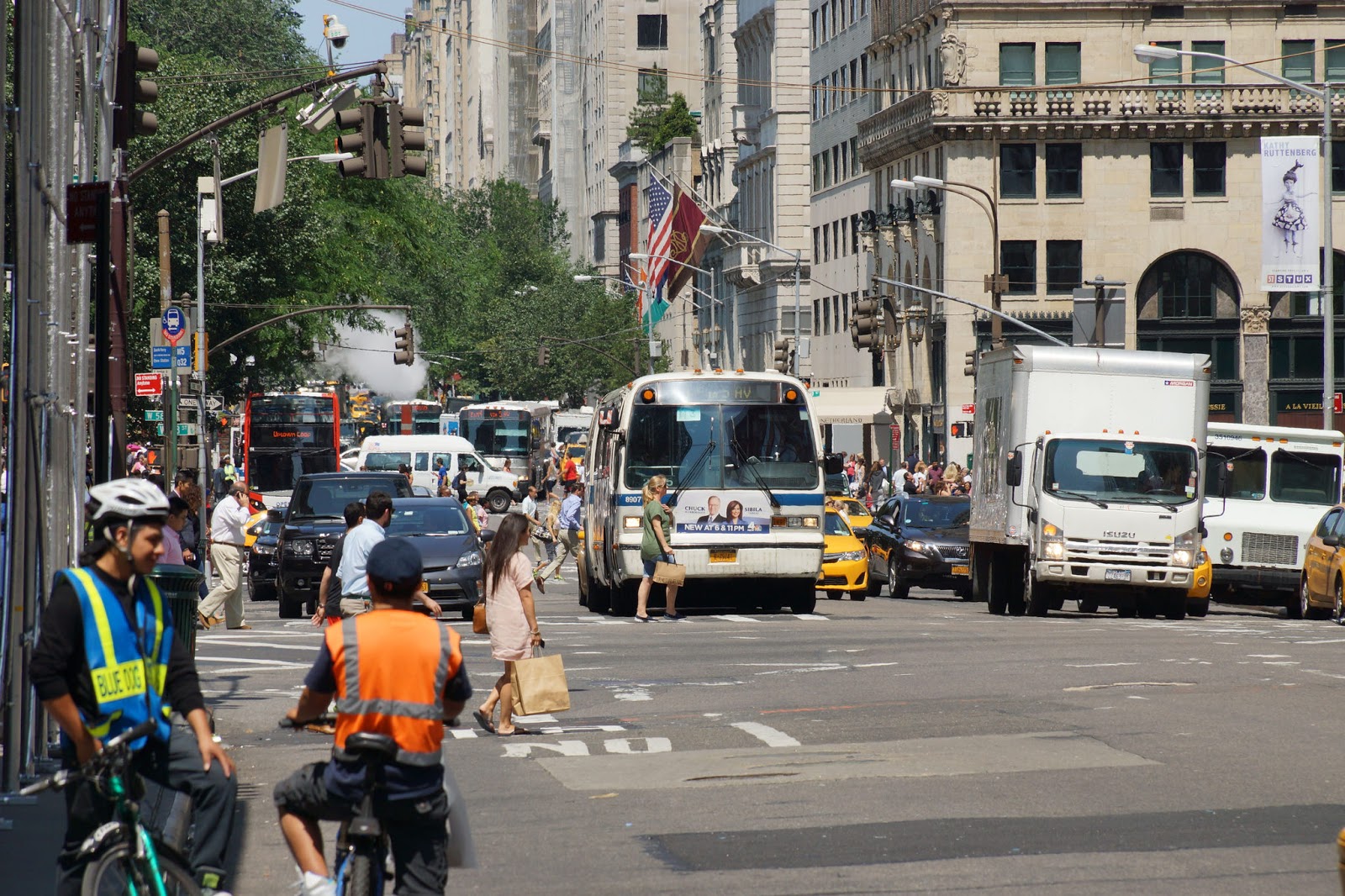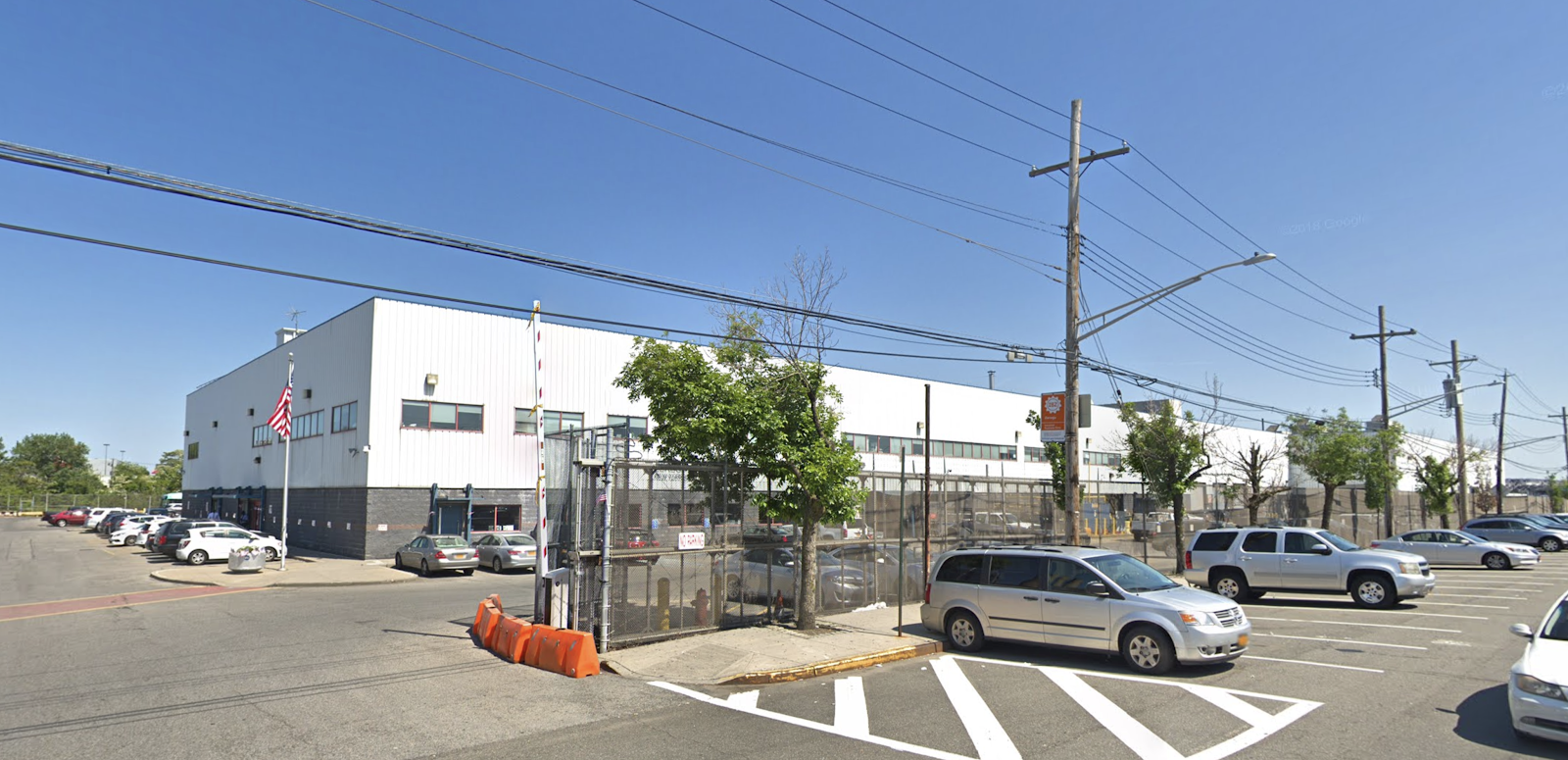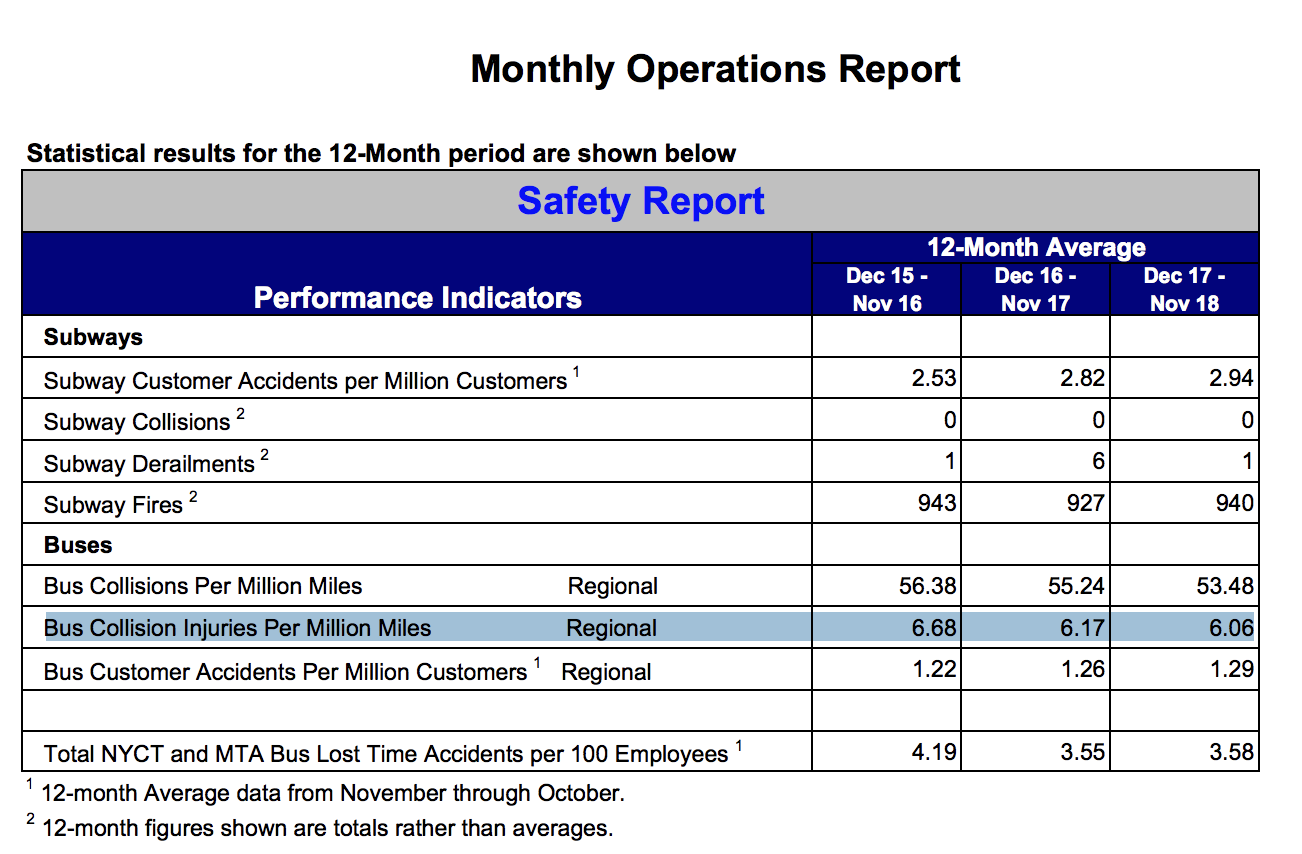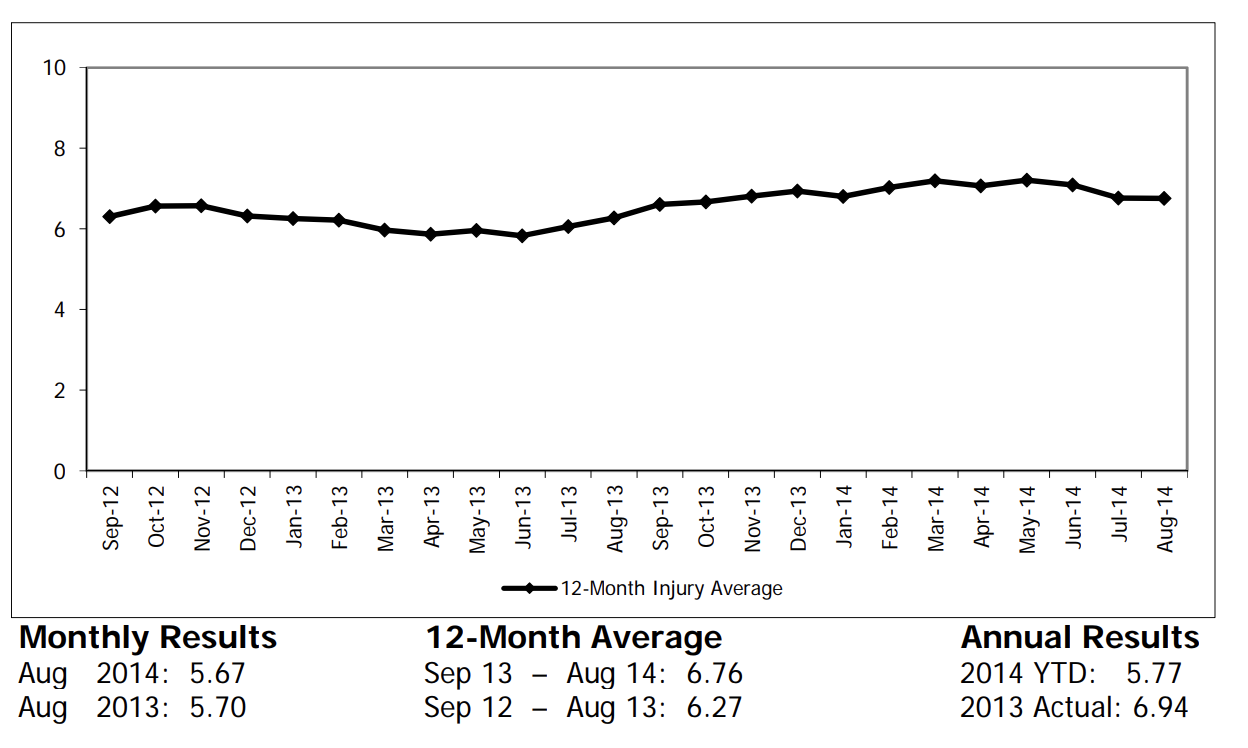

Year-end news showed that New York is one of only a handful of major cities steadily reducing street deaths, though fatalities of people walking between subway cars on moving trains have also recently spiked. TransitCenter’s Kirk Hovenkotter attended a NYC Transit Vision Zero bus operator safety training to learn more about a little-known transit safety program.
The NYC Transit Zerega Avenue Bus Maintenance and Training Facility doesn’t look like a place where lives are saved. The distinct lack of buses also makes you question whether you’re in the right place when you arrive at this industrial corner of the Bronx early in the morning. But every bus operator in New York City is required to focus intensively on driving buses in ways to minimize crashes and pedestrian deaths.
Vision Zero is a commitment by cities and agency leaders that views traffic deaths as systemic and largely preventable via design, enforcement and safe driving behavior. Mayor de Blasio started the trend of American cities adopting Vision Zero as policy in 2014. NYC Transit is the first bus operator that has all of its operators go through and stay current on a multi-day Vision Zero course jointly developed with the NYC Department of Transportation.
NYCT puts over 3,200 buses onto New York City streets each day, for over a million miles in service every month. Since the agency began its Vision Zero program in 2015, it has trained over 6,000 operators every year. The goal is for every operator to go through multiple rounds of trainings.
Bus injuries per million miles are down 9% over the past three years.

MTA measures the safety of its buses in three ways: Bus collisions, the number of times a bus hits a car, person, or fire hydrant; bus collision injuries, when someone gets injured from one of those collisions, and bus customer accidents, when someone is hurt while on the bus. When a bus hits and seriously injures or kills a pedestrian, it’s recorded under bus collision injuries.
In the 3 years that the MTA has data since then, bus pedestrian injuries per million miles have fallen from a 12 month average of 6.68 in December 2015 to 6.06 in December 2018. That still means that as an agency running buses 12 million miles every year, 6 New Yorkers will be struck by a bus every month.
Bus Collision Injuries from September 2012 – September 2014

At Transit’s invitation, I attended one of the operator trainings. It wasn’t hard to see why they’ve been effective. Of the 30 operators present, some had only been on the job two years, while a handful had been driving longer that this 30 year old has been alive.
The 12 hour training centered on video shot from New York City buses moments before they struck a New Yorker on foot.
They are images that are difficult to forget. Seeing pedestrians’ eyes go wide and faces recoil in shock as a bus imminently hits them is horrific.
After each scene played out multiple times, the operators were called upon to discuss what they would do differently. From the initial camera angle, it can be difficult to see why the crash happened. Yet each time we went through additional angles, causes became clearer: A rider talking to the operator about the fare, distracting them as they made a left turn, or an operator trying to make a left, looking for an opening in the car traffic but not spotting a pedestrian in the crosswalk.

Photo credit: Chris Sampson
Transit planners and policymakers can ensure operators are put in as few difficult positions as possible. For example, plan routes with limited left turns, and eliminate operator supervision of fare payment. We expect professional drivers to be the safest drivers on the road, but bus operators shouldn’t be put in a position where they’re likely to hit a a pedestrian.
New York shouldn’t be an exception. Transit agencies across the country should be drafting Vision Zero courses for their operators along with their Departments of Transportation.
 On the Brink: Will WMATA’s Progress Be Erased by 2024?
On the Brink: Will WMATA’s Progress Be Erased by 2024?
The experience of being a WMATA rider has substantially improved over the last 18 months, thanks to changes the agency has made like adding off-peak service and simplifying fares. Things are about to get even better with the launch of all-door boarding later this fall, overnight bus service on some lines starting in December, and an ambitious plan to redesign the Metrobus network. But all of this could go away by July 1, 2024.
Read More A Bus Agenda for New York City Mayor Eric Adams
A Bus Agenda for New York City Mayor Eric Adams
To create the “state-of-the-art bus transit system” of his campaign platform, Mayor Adams will have to both expand the quantity and improve the quality of bus lanes. We recommend these strategies to get it done.
Read More